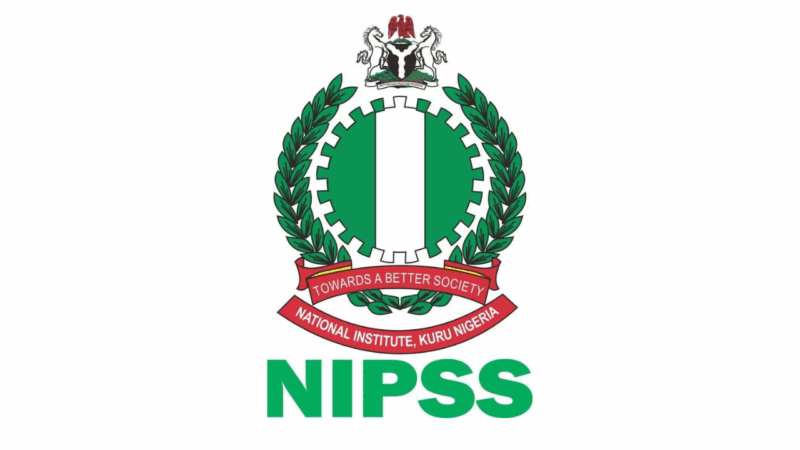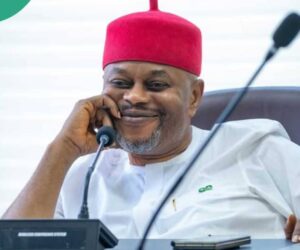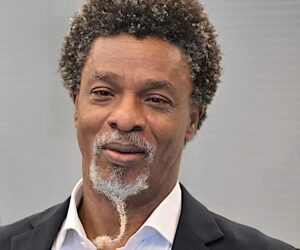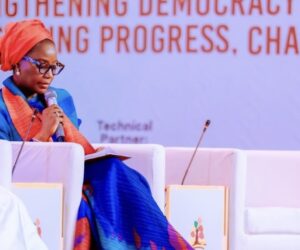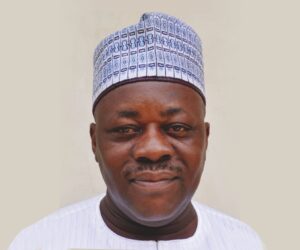By Hassan Husaini, mni
The National Institute for Policy and Strategic Studies (NIPSS) in Kuru is designed to be a crucible for Nigeria’s future leaders. Its flagship programme, the Senior Executive Course, pushes participants to engage directly with the complex realities of the nation we were trained to lead. For our Course 24, Integrated Research Group (IRG) 2 embarked on a prescribed study tour with the theme: “Governance and the Nigerian Public, with special focus on Education, Health, Electricity, Water, and Roads.” Our assignment was to move beyond theoretical models and assess the ground-level functionality of these essential services.
Our tour took us to two states for a week each: Niger State from April 7th to 14th, 2002, and Ogun State from April 14th to 19th, 2002. The contrast between the two experiences presented a stark portrait of two very different Nigerias.
SPONSOR AD
Our first leg in Niger State was a lesson in institutional decay. From a shoddy reception and inadequate accommodation to a hurried meeting with the Governor, the experience was disheartening. Our single audience with the State Governor was brief and left little room for meaningful dialogue. His address to our group was memorable for its dissonance with the realities we were witnessing. While acknowledging national challenges, he dismissed the pervasive hunger in the country as a “lie,” an assertion that struck a discordant note. His primary policy focus was the establishment of a “HYPERDEC” (Hydro Power Producing Areas Development Commission), modelled after the OMPADEC (Oil Mineral Producing Areas Development Commission) in the Niger Delta. He argued that while hydroelectric dams like the one we visited at Shiroro provided power for the nation, they deprived local farmers of water for irrigation. Though the concept had merit, its presentation felt more like a political talking point than a well-considered solution offered for robust discussion, especially as the tangible sectors of education and health we were there to study languished in neglect.
Our fieldwork at the Local Government level was even more revealing. The decay was palpable. At the Primary Healthcare Centres we inspected, the triple challenges of substandard infrastructure, a crippling lack of essential drugs, and acute staff shortages were the norm. Our visits to several Local Government secretariats were equally disheartening; we often failed to meet the elected chairmen, instead being received by junior staff who were clearly unaware of our scheduled visit. Community members lamented that the only time they saw their local government chairman was at the end of the month. The state of primary education was perhaps the most distressing, with schools in an advanced state of physical decay and pupils struggling to communicate in English. It was a week of profound disillusionment, leaving us with a heavy cache of evidence pointing to systemic failure.
We arrived in Abeokuta, the Ogun State capital, on April 14th with our expectations firmly managed. Yet, from the moment we stepped into the Gateway Hotel, a different reality unfolded. State officials received us with genuine warmth and efficiency. The accommodation was comfortable, reflecting a clear intention to ensure our stay was productive. This welcome was not just polite; it was a statement of administrative competence that immediately began to restore our faith.
The following morning, we were scheduled to meet Governor Aremo Olusegun Osoba. To understand the calibre of man we were meeting, one must appreciate his unique place in Nigerian history. He was, and remains, a quintessential blend of two powerful professions: a veteran journalist of immense repute and a seasoned politician. This background forged a leader who was both articulate and politically astute.
We expected a brief greeting, but what we received was a masterclass in hands-on leadership. After shaking our hands and enquiring sincerely about our welfare, the elderly Governor did the unexpected: he climbed into our coaster bus and, for the entire journey, remained standing, expertly navigating the moving vehicle as he pointed out landmarks and detailed his administration’s strides in education, health, and infrastructure. His humility was disarming. He engaged us with questions, answering ours with a clarity that made governance tangible.
Emboldened by his demeanour, I ventured a question that had long intrigued me. I noted that many Yoruba leaders, from the era of Chief Obafemi Awolowo, often shunned official residences, preferring their private homes. I mentioned I had heard he did the same. The atmosphere shifted palpably. My colleagues were aghast at my directness, for the unspoken implication of my question was clear: this practice allowed leaders to collect hefty accommodation allowances from the public purse while simultaneously using state resources to maintain and upgrade their private properties, a controversial benefit not available to those who resided in official quarters. But the wisdom of Aremo soon surfaced; he offered a measured response and gracefully steered the conversation forward.
The difference at the local government level was staggering, directly addressing our study theme. The chairmen, councillors and the Staff of the local Government,and were young, vibrant, and clearly understood their mandates. They presented achievements in our sectors of focus: functional primary healthcare centres, schools in good condition with educational support programs, and newly sunk boreholes ensuring water supply. When I asked about the source of this commitment, the answer was starkly honest: the consequences of failure were dire. Community accountability was immediate and non-negotiable.
The day’s most profound lesson came that evening, entirely unplanned. On our way back at the end of our tour, Governor Osoba, without any prior notice, directed our coaster bus to make a detour to his private residence. It was not a formal invitation but a spontaneous decision. We arrived at a home that was not a policed edifice, but a modest, welcoming building. After serving simple refreshments—Coke, Fanta, and water—he gestured for me to follow him. He led me into his simple bedroom, a silent, powerful answer to my provocative query hours earlier. He was showing me, not just telling me, that his home was just that—a home, not a symbol of ill-acquired power, and certainly not a property lavishly maintained by public funds.
The next day, we toured other local governments on our own, but the scenario was the same everywhere: visible progress in the core sectors of education, health, water, and roads. The picture we got from these visits was one of healthy competition among the Local Governments to provide the best services in the areas covered by the theme of our visit.
The following day, we were invited to participate in the State Executive Council meeting, where we featured alongside the Local Government Chairmen. This integrated meeting was not only unique but a true reflection of new and effective ways of governance. It included not only the state commissioners but also all the chairmen of the Local Government Areas of the state. The nature of the discussions and the quality of the contributions from each local government area was legendary. Everyone participated freely in what can only be described as a collaborative atmosphere filled with a spirit of comradeship. I have simply not seen anything near this level of integrated governance before or since. There, we witnessed governance as it should be: strategic, accountable, and focused on the public good.
Watching this exemplary display of participatory governance, I was moved. When it was my turn to comment, I could not help but declare to Governor Osoba, “If this is the Alliance for Democracy (AD), then from today, please consider me a member.”
At the conclusion of our visit, His Excellency’s generosity was as profound as his leadership. He presented each member of our group with a specially prepared native Adire fabric and a cash gift. This gesture, so thoughtful and personal, remains indelible in our hearts.
A telling epilogue to our study was the respective states’ response to our findings. Following our return to Kuru, all states visited were invited to send delegations to receive our reports for possible implementation. In a clear demonstration of commitment to good governance, Ogun State sent a high-powered delegation to formally receive our findings. In stark contrast, Niger State sent no representative—a final act of lukewarm indifference that sadly confirmed our on-the-ground observations about their approach to governance and development.
Reflecting on that transformative experience, it becomes clear that Governor Osoba’s model of governance was a direct inheritor of Chief Obafemi Awolowo’s legacy of progressive governance, a legacy fundamentally built on the cornerstone of free education. This model was being successfully replicated in Osun State under Chief Bisi Akande. It is one of the great tragedies of our recent political history that this standard was brutally truncated in the 2003 elections. The inability of these progressive governors to secure a second term was not a rejection by their people but the direct result of a calculated political betrayal by then-President Olusegun Obasanjo. After securing support from the South-West leaders based on promises of restructuring, Obasanjo orchestrated a federal electoral onslaught that targeted the Alliance for Democracy governors. This betrayal led to the defeat of the AD governors in all South-Western states except Lagos, where Governor Bola Ahmed Tinubu retained his seat, ostensibly because he was not a part of the initial pact with President Obasanjo. This event, which later prompted Muhammadu Buhari to describe Chief Akande as a victim of a “diabolical double-cross,” marked a pivotal setback from which the quality of progressive leadership in the region has never fully recovered.
Beyond the immediate contrasts in infrastructure and administrative efficiency, this NIPSS study tour revealed a more fundamental divergence: the critical role of an educated populace and political class. The stark difference in the quality of governance and community engagement between Ogun and Niger States appears to be deeply rooted in the educational landscape. This was not an isolated finding; during our final course presentations, other groups that visited different states reported similar patterns, confirming that the correlation between educational attainment and effective governance was a national phenomenon. In Ogun, an environment that valued education had, in turn, cultivated a cadre of leaders at both state and local levels who were not only qualified but also acutely aware of their responsibilities to an equally aware electorate. The situation in Niger State suggested a cyclical challenge: a deficit in educational quality and access impedes the emergence of a sufficiently critical mass of enlightened leadership. Fundamentally, an uneducated leader cannot be expected to genuinely respect education or prioritize its advancement; consequently, education itself becomes the primary victim of such leadership. This creates a self-perpetuating cycle where the electorate’s capacity to discern and elect competent leaders is compromised. This is not a reflection of a lack of qualified human capital, but rather a symptom of a political ecosystem where the recruitment process for leaders, particularly at the local government level, is often impacted by these educational disparities. Ultimately, the quality of governance in any democracy is inextricably linked to the educational attainment of both its leaders and its citizens.
That encounter was not just a study tour; it was a lifelong lesson in service from a true master. If in the 23 years since that April of 2002, Nigeria had been blessed with more leaders of Aremo Osoba’s character and competence, our nation would undoubtedly be a better place today.
(Hassan Husaini is a member of the National Institute (mni), having participated in 2002.)

